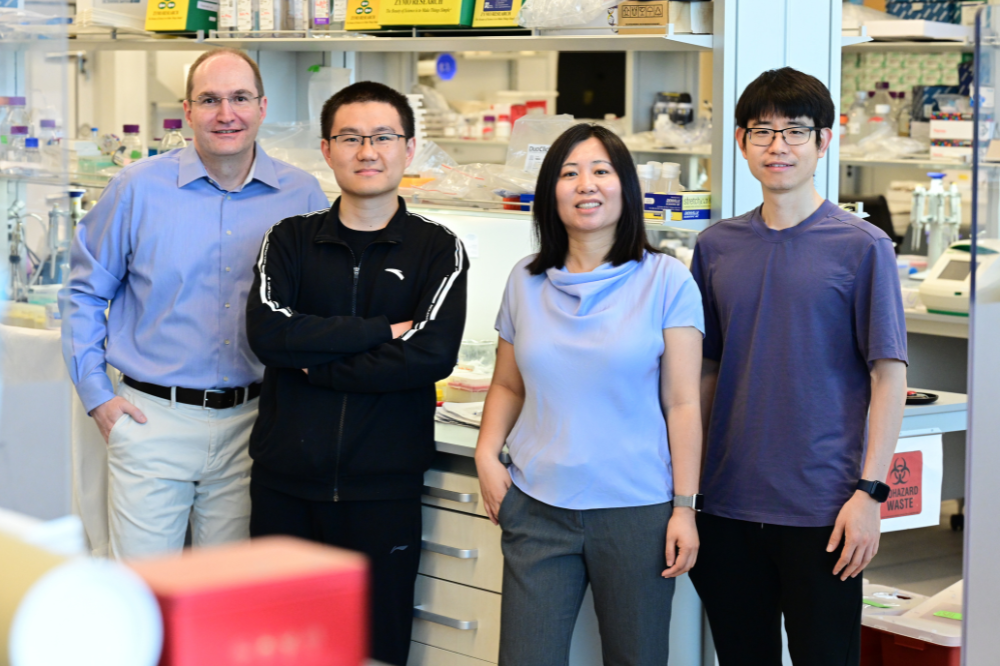
Expression pattern of predicted target de novo genes. Novel genes may play significant roles in evolution, biology, and disease.
Most genes are ancient and shared across species. But a small subset of genes are relative newcomers, spontaneously emerging from stretches of DNA that once encoded nothing at all.
Now, after nearly a decade of charting these genes in fruit flies, researchers have discovered how these de novo genes are regulated. In complementary studies, in Nature Ecology & Evolution and PNAS, the team showed how transcription factors and genomic neighbors switch these genes on and integrate them into cellular networks-the first studies to identify these master regulators. Together, the findings shed light on how new genes become functional, with broad implications for understanding evolutionary biology and gene regulation-and diseases born from their dysfunction.
"The more we know about de novo regulation, the more information we have about gene expression and regulation itself," says Li Zhao, head of the Laboratory of Evolutionary Genetics and Genomics at Rockefeller. "That's important not only for evolutionary biology but also for the study of diseases like cancer, which are associated with rapid genetic dysregulation."
New genes, old questions
When Zhao started her lab eight years ago, the existence of de novo genes had only been recently discovered. As Zhao began identifying hundreds of these mysterious genes, Torsten Weisel, 1981 Nobel laureate and president emeritus of Rockefeller, took a personal interest in her work. Over lunch, Weisel asked her how the de novo genes that she was discovering were regulated. "I was stunned," Zhao recalls. "We knew nothing about this-it was a question, asked during a casual conversation, that I had not even thought about. I told him we could not answer that question yet, and that I did not know when we would be able to answer it."
But the seed was planted. And as Zhao continued cataloguing de novo genes, she began exploring the possibility of figuring out how they are expressed. Technology improved, and new computational methods allowed her team to infer which transcription factors regulate specific genes. Zhao's lab also eventually figured out how to apply single-cell sequencing techniques to the testis of Drosophila, where many de novo genes are expressed. "We finally had the genetic and the computational foundation to answer the question put to me years ago."

Left to right: Authors Nicolas Svetec, Bing-Jun Wang, Li Zhao, and Junhui Peng
In the Nature Ecology & Evolution paper, the team focused on how transcription factors regulate de novo genes, and discovered three factors that act as master regulators. After analyzing gene expression across hundreds of thousands of cells, they found that only about 10 percent of transcription factors were responsible for controlling the majority of de novo genes. Zhao and colleagues then engineered flies with different copy numbers of these factors, and performed RNA sequencing to observe the effects. Sure enough, the variations caused clear, often linear shifts in the expression of de novo genes, confirming their role as key regulators.
In their PNAS paper, the researchers turned their attention to the genomic neighborhoods of de novo genes. They investigated whether these young genes are co-regulated with nearby genes that are more evolutionarily well-established. By analyzing gene expression patterns and chromatin accessibility data, they found that de novo genes often share regulatory elements with adjacent genes, suggesting a mechanism of co-regulation.
"The papers are closely linked," Zhao says. "One talks about how the cellular environment regulates new genes. The other asks how genes work together to regulate one another."
De novo grows up
Beyond explaining how de novo genes are regulated, the findings may shed light on how de novo genes are formed in the first place. "We cannot say for sure that these transcription factors caused de novo genes to originate," Zhao says. "But we've now seen that tinkering with transcription factors can cause significant changes." As the lab continues studying the role that transcription factors play in de novo gene regulation, that link may become clearer.
As the lab continues studying de novo genes, Zhao also expects to uncover broader insights into how gene networks evolve-and what happens when they go awry. The study of cancer, among other diseases associated with relatively rapid dysregulation of genes, may benefit from work that explains how evolutionarily young genes arise and are regulated. And because of their shorter evolutionary history and more simple regulation, de novo genes may provide an accessible window into the trickier question of how the rest of the genome works.
"Expression and regulation is more complex than we think," Zhao says. "De novo genes may provide a simplistic model that helps us better understand gene expression and evolution."






